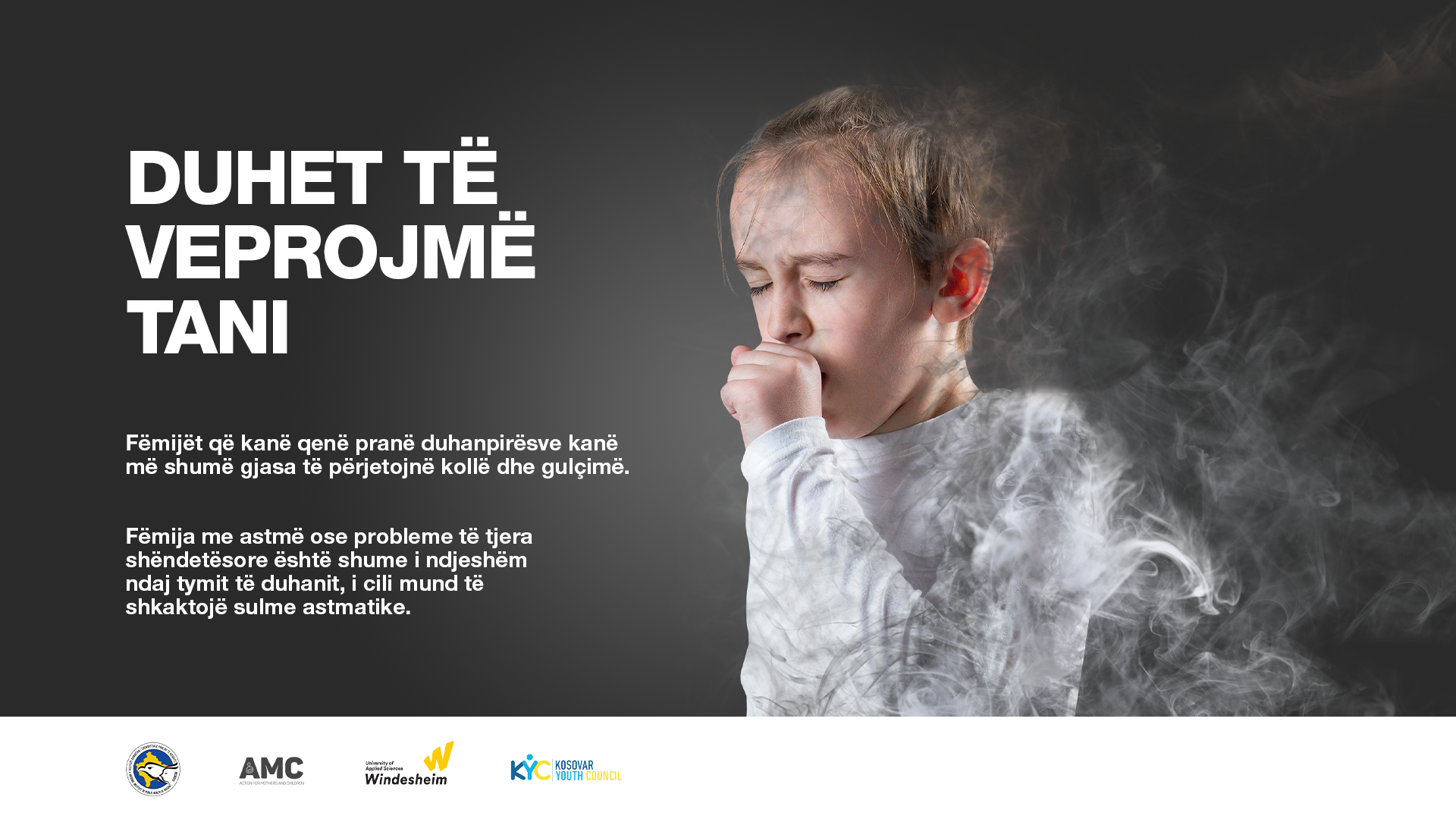
Let’s act now to protect our mothers and children
24.05.2023
The dangers of second-hand smoke for pregnant women and children.
Short summary:
- Focus areas of this project: second-hand smoking, health effects of second-hand smoking on pregnant mothers and children, smoking ban
- Health risks for pregnant women: lung cancer, coronary heart disease, etc.
- Health risks for child: infections, asthma attacks, slower lung growth
- Possible problems during pregnancy: lower birth weight of child, SIDS (sudden infant death syndrome)
We need to act now. Let us work together and protect the health of our beloved ones that are vulnerable, like pregnant women and children!
In Pristina, some bars and restaurants still allow smoking indoors. Even when smoking and non-smoking seating areas are available, pregnant women and children sometimes end up sitting in the smoking section if a smoker is present in the group.
Second-hand smoke in bars and restaurants is dangerous for pregnant woman and children. Research shows that symptoms such as middle ear infections, pneumonia and bronchitis, more frequent and severe asthma attacks, and slower lung growth are all possible risks for children exposed to second-hand smoke. Children who have been around smokers are more likely to experience coughing and shortness of breath. A child with asthma or other health issues is particularly vulnerable to the harmful effects of second-hand smoke, as it may cause an asthma attack. A severe asthma episode can endanger a child’s life, so smoking close to children should be stopped urgently. When pregnant women breathe in second-hand smoke, it can harm not only themselves but also their babies. For pregnant women, exposure to second-hand smoke can increase the risk of developing lung cancer or coronary heart disease. Furthermore, because of the exposure, babies might be born with low birth weight. Sudden infant death syndrome (SIDS) can also be caused by second-hand smoke. SIDS refers to the unexpected death of an infant during the first year of life.
Following a successful interview with a well-known doctor in Pristina, it was confirmed that many previous research findings regarding the health effects caused by smoking were consistent with his personal experiences. The doctor mentioned that the length and the degree of exposure to second-hand smoke are important factors contributing to the severity of the health effects. Short-term exposure to second-hand smoke can still be harmful, but the impact of long-term exposure is much more severe. For children, exposure to second-hand smoke is terrible at any age. However, it can be especially harmful after birth, as the child’s lungs are still developing, and exposure to tobacco smoke can harm the functioning of internal organs.
With the aim to decrease the smoking rate, a campaign has been launched to raise awareness about the risks of second-hand smoke. Posters have been put in various places to inform the public about the dangers of second-hand smoke. Stickers have been displayed in restaurants and cafes to indicate that they are committed to protecting customers from the harmful effects of second-hand smoke.
Are you with us to protect our pregnant mothers and children? Join us on this campaign! You can be part of this campaign by sharing this article and other provided materials with friends and family. Also, talking about this issue with people you know will help spread the message.
This campaign has been created in collaboration with Windesheim University of Applied Sciences students from the Netherlands and AMC. During this collaboration, a team of four students performed desk research, conducted interviews, and did field work with AMC to address this issue.


This campaign was made in collaboration with:









